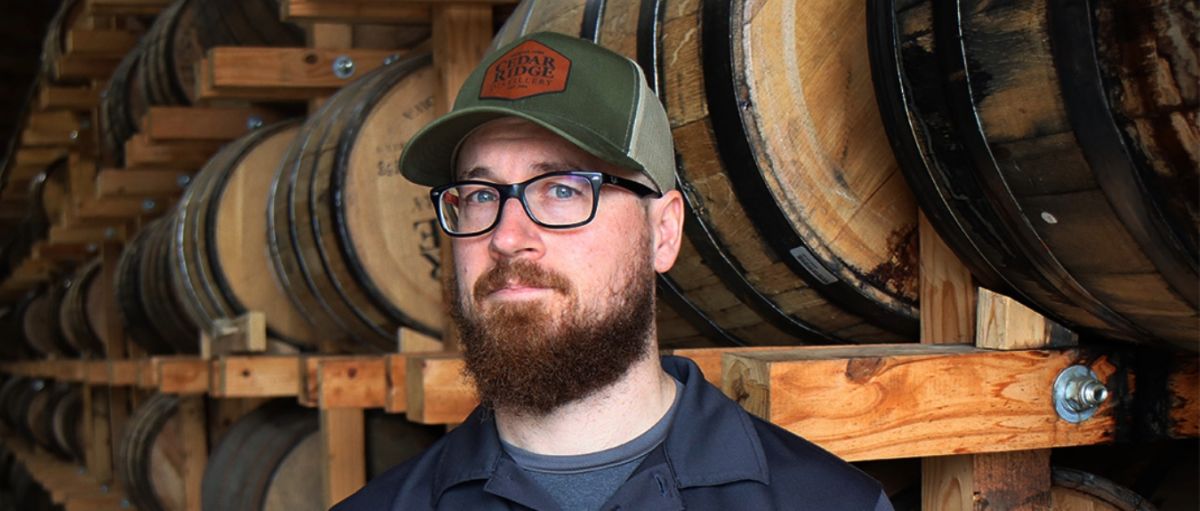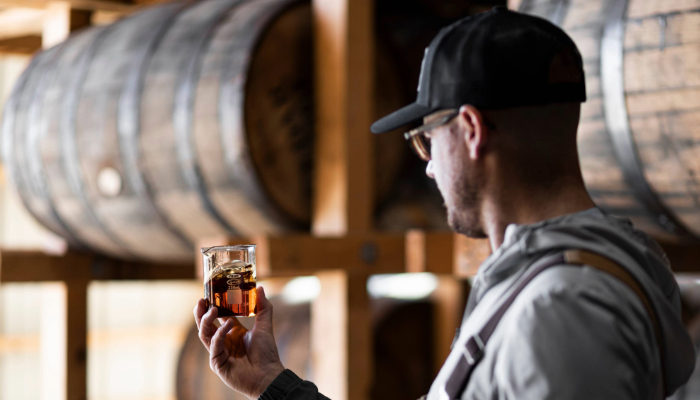Warehouse
Closed
July 10, 2026
Judging
Date
July 26, 2026
Winners
Announced
August 12, 2026

The Alcohol and Tobacco Tax and Trade Bureau (TTB)’s acknowledgment of American Single Malt Whiskey is redefining the whiskey market, changing consumer perceptions and presenting it as a legitimate, must-try category. In an interview with Cedar Ridge's Master Distiller, Murphy H. Quint, the USA Spirits Ratings discusses how this newfound recognition is changing the game. Cedar Ridge is leading the way in this change, from educating consumers about this unique market to developing smart partnerships with retailers and distributors. Discover how American single malt is set to carve its own market niche, including how Cedar Ridge intends to lead the drive.
The official recognition of American single malt Whiskey is undoubtedly set to transform consumer perceptions and the way it’s positioned in the market. For years, the absence of a legal definition left the category somewhat overlooked. Many true whiskey enthusiasts and consumers viewed American single malt as a niche, craft-driven segment that didn’t warrant the same attention as more established categories. With the TTB now officially recognizing it, that perception is beginning to shift. American single malt is no longer seen as a fleeting trend; it has solidified its place in the whiskey world. For traditional whiskey drinkers, this newfound legitimacy makes the category more appealing and less like a small, artisanal outlier. As a result, it will likely attract a broader audience, bringing more recognition and respect to American single malts across the market.
Also read: American Single Malt Whiskey Gains Official Recognition From TTB
The rise of American single malt whiskey is surely a complex yet exciting shift in the whiskey landscape. While Scotland boasts centuries of tradition in production practices and regional diversity that shape a wide range of single malts, the U.S. doesn’t have that same historical foundation. However, rather than competing with tradition, American single malt should embrace this difference. The lack of long-standing tradition creates a unique opportunity for innovation. In the U.S., distillers are constantly experimenting with new production techniques and blending methods, which are helping to define the future of American single malt whiskey. With its official recognition as a distinct category, it’s now poised to attract consumers who traditionally gravitate toward Scotch or Japanese whiskeys. This is an exciting time for American single malt, as it carves out its own space in the market and introduces something fresh to whiskey enthusiasts.

Image: Cedar Ridge American Single Malt Whiskey
At Cedar Ridge, our strategy is centered around consistently releasing premium products that provide exceptional value to our customers. When someone invests $100 in a bottle, they’re making a significant commitment to quality. If that product doesn’t meet expectations, they may feel disillusioned and turn away from the category altogether. To avoid this, we are committed to ensuring that every product we release delivers on its promise, maintaining the high standards and accolades that have allowed us to carve out a strong presence in the market. Educating consumers about the value of American single malt and raising awareness of its official recognition as a distinct category is essential for us. By doing so, we aim not only to expand the reach of the American Single Malt category but also to create a sustainable and thriving market that benefits all distilleries in the industry.
Retailers face several challenges when it comes to distinguishing American single malt whiskey from other types of whiskey. One major difficulty is the wide variance in flavor profiles, even within the American single malt category itself. The broad framework of the category allows for significant creativity among distilleries. For example, one might produce whiskey with a heavy sherry finish, while another could focus on new or used oak finishes. This variation can make it hard for retailers to effectively describe and differentiate products for consumers. To overcome this challenge, it’s essential to invest in educating retailers. When they are equipped with a deep understanding of the different flavor profiles and production techniques, they can confidently communicate these differences to consumers. Without proper education, retailers may struggle to sell American single malt effectively, and the product could risk being overlooked.
Overextending themselves by spreading their distribution too thin is one of the biggest mistakes new distilleries make. It’s essential to be strategic and only distribute to markets where you can provide active support. This means taking the time to visit retailers, conduct product demonstrations and educate them on the distillery’s offerings—detailing the production process and explaining what makes the product unique. Without this educational support, even the best products will struggle to move off the shelves, leaving both retailers and consumers unsatisfied. Patience is key. Rather than rushing to expand rapidly, distilleries should focus on building strong, knowledgeable relationships in select markets to ensure long-term success and repeat purchases.
Also read: How TTB's New Rules in 2025 Will Transform Distilled Spirits Packaging
The biggest challenge is encouraging consumers to try American single malt whiskey for the first time. Once they experience the quality and feel that their investment was worthwhile, they’re more likely to return to the brand. The key is ensuring that the first experience delivers excellent value. While Scotch and Japanese whiskeys have already cultivated strong consumer loyalty, American single malt must offer something exceptional to stand out. This means consistently releasing top-quality products so that when consumers taste American single malt for the first time, they’re not just satisfied—they’re eager to return for more.

Image: Master Distiller Murphy H. Quint tasting whiskey
When it comes to working with retailers, the key is establishing a strong personal presence in the market. For distilleries, especially smaller, newer ones with limited resources, it’s essential to focus on distribution in locations they can physically visit. This allows them to train staff and ensure they can confidently educate customers about American single malt whiskey. Retailer education is crucial for explaining the unique qualities of American single malt and how it compares to Scottish and Japanese whiskeys. However, the challenge is even greater with distributors. In the U.S., distributor consolidation means fewer options to stand out in a crowded portfolio. Distilleries must find ways to capture the attention of distributors, which often requires building strong relationships in a category they have historically been hesitant to embrace. While there isn't a universal solution, distilleries that successfully navigate these distributor dynamics and strive to differentiate themselves in the market will be the ones that achieve success.
At Cedar Ridge, our primary focus remains on our flagship American single malt, "The Quintessential," which has garnered numerous accolades and widespread recognition. We release two special editions of this whiskey each year, ensuring that each batch is crafted with meticulous attention to quality. Our goal is to continue producing only the highest-quality batches that not only win awards but also build lasting consumer trust. While we plan to gradually increase our batch sizes, we are doing so strategically, ensuring that every batch upholds exceptional standards. This methodical growth allows us to expand our distribution and reach new markets without compromising on quality or overextending our resources. We are committed to educating consumers at a thoughtful and deliberate pace, ensuring they fully understand the value of our product. By maintaining this disciplined approach, we aim to build a strong foundation for sustainable growth, avoiding the temptation to rush expansion at the cost of quality.
Header image sourced from Cedar Ridge
Related Links
Ten Best American Single Malts You Need To Try
The Best Whiskey in the World as per USA Spirits Ratings
The 2025 Winners List is Now Live! Explore the Full List!